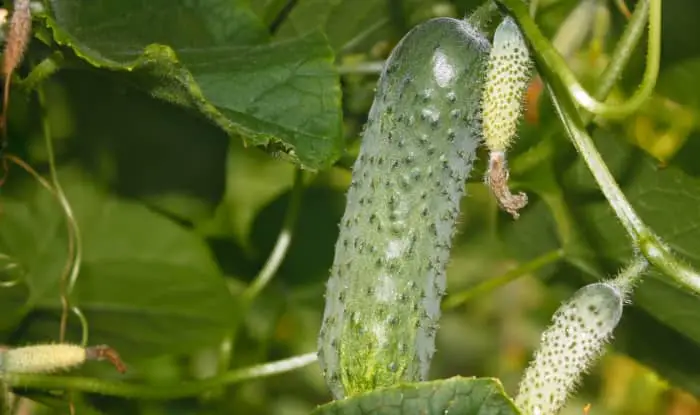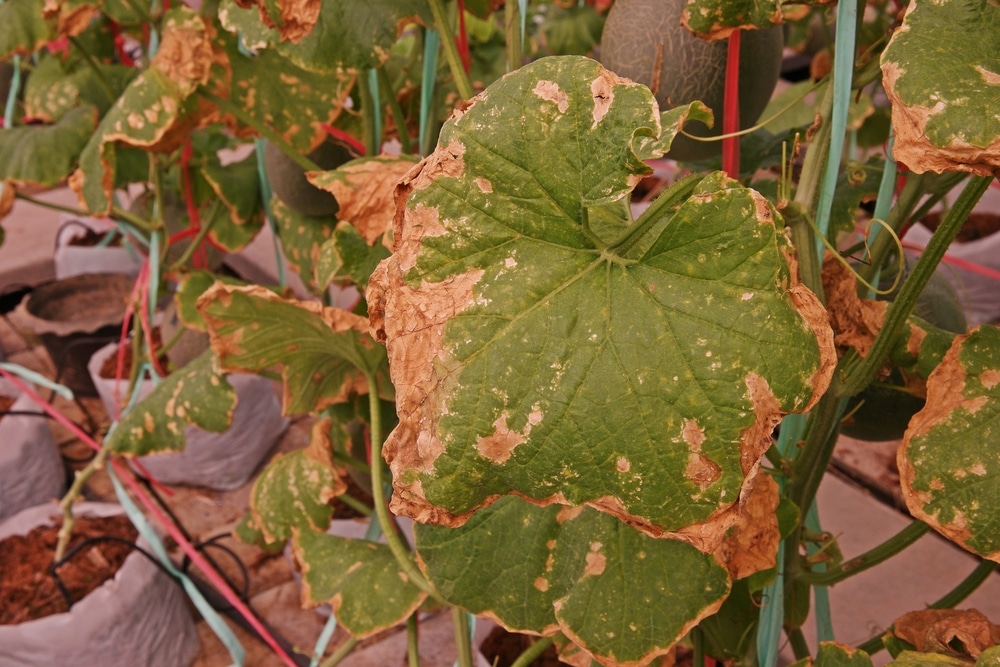Common Culprits: Identifying the Most Likely Causes of Cucumber Death
When it comes to growing cucumbers, many gardeners have asked themselves, “why are my cucumbers dying?” The truth is, there are several reasons why cucumbers may not thrive. By understanding the most common causes of cucumber death, gardeners can take proactive steps to prevent these issues from arising.
Overwatering is a common mistake that can lead to root rot, causing the plant to wither away. On the other hand, underwatering can cause the plant to become stressed, making it more susceptible to disease and pests. Pests, such as aphids, whiteflies, and spider mites, can weaken the plant, while diseases like powdery mildew, downy mildew, and bacterial wilt can spread quickly, causing widespread damage. Lastly, nutrient deficiencies, particularly a lack of nitrogen, phosphorus, and potassium, can impede healthy growth.
By recognizing the signs and symptoms of these common culprits, gardeners can take action to prevent them from occurring. In the following sections, we’ll delve deeper into each of these factors, providing practical tips and advice on how to create a healthy and thriving cucumber crop.
Water Woes: How Incorrect Watering Can Kill Your Cucumbers
Watering is a crucial aspect of cucumber care, and getting it wrong can be disastrous. Overwatering is a common mistake that can lead to root rot, causing the plant to wither away. On the other hand, underwatering can cause the plant to become stressed, making it more susceptible to disease and pests. So, why are my cucumbers dying due to watering issues?
To avoid water-related problems, it’s essential to check the soil moisture regularly. Stick your finger into the soil up to the first knuckle, and if the soil feels dry, it’s time to water. Avoid getting water on the leaves to prevent fungal diseases. Instead, water at the base of the plant, allowing the soil to absorb the water.
Another critical aspect of watering is avoiding waterlogged soil. Cucumbers don’t like wet feet, so make sure the pot has good drainage holes to prevent water from accumulating. If you’re growing cucumbers in a garden bed, ensure the soil drains well and doesn’t retain too much water.
By adopting proper watering techniques, you can prevent root rot and other water-related issues that can cause cucumber death. Remember, it’s always better to err on the side of caution and underwater slightly than to overwater and risk root rot.
Pest Patrol: How to Identify and Eliminate Common Cucumber Pests
Cucumbers are susceptible to various pests that can weaken the plant, reduce yields, and even cause death. So, why are my cucumbers dying due to pest infestations? Identifying and controlling these pests is crucial to prevent damage and ensure healthy growth.
Aphids, whiteflies, and spider mites are common pests that affect cucumbers. Aphids are small, soft-bodied insects that feed on plant sap, causing curled or distorted leaves. Whiteflies are tiny, winged insects that feed on plant sap, excreting a sticky substance that attracts ants and promotes fungal growth. Spider mites are tiny, spider-like insects that feed on plant sap, causing yellowing or bronzing of leaves.
To identify these pests, inspect your cucumber plants regularly, looking for signs of infestation such as curled leaves, white powdery residue, or tiny moving dots on the leaves. Use a hand lens or magnifying glass to examine the undersides of leaves and stems.
Organic and integrated pest management methods can be used to control these pests. Spray soapy water or neem oil on the plants to kill aphids and whiteflies. Introduce natural predators, such as ladybugs or lacewings, to prey on these pests. For spider mites, use a strong jet of water to dislodge them from the plants.
Prevention is key to avoiding pest infestations. Keep your garden clean, removing weeds and debris that can harbor pests. Use physical barriers, such as fine-mesh screens, to prevent whiteflies and other pests from reaching your plants. By being proactive and taking prompt action, you can prevent pest infestations from causing cucumber death.
Disease Diagnosis: How to Recognize and Treat Fungal and Bacterial Infections
Fungal and bacterial diseases can be devastating to cucumber plants, causing widespread damage and death. So, why are my cucumbers dying due to disease? Identifying and treating these diseases promptly is crucial to prevent the spread of infection and ensure healthy growth.
Powdery mildew, downy mildew, and bacterial wilt are common diseases that affect cucumbers. Powdery mildew appears as a white, powdery residue on the leaves, while downy mildew causes yellowing or stunted leaves. Bacterial wilt, on the other hand, causes the plant to wilt and die suddenly.
To diagnose these diseases, inspect your cucumber plants regularly, looking for signs of infection such as white powdery residue, yellowing leaves, or sudden wilting. Use a hand lens or magnifying glass to examine the leaves and stems more closely.
Treating fungal and bacterial diseases requires a combination of fungicides, bactericides, and cultural practices. Fungicides can be used to control powdery and downy mildew, while bactericides can be used to control bacterial wilt. Cultural practices such as removing infected leaves, improving air circulation, and reducing humidity can also help prevent the spread of disease.
Prevention is key to avoiding disease infestations. Use crop rotation, remove weeds and debris, and avoid overwatering to reduce the risk of disease. By being proactive and taking prompt action, you can prevent disease from causing cucumber death.
Nutrient Nightmare: How Soil Deficiencies Can Cause Cucumber Death
Soil nutrients play a critical role in healthy cucumber growth, and deficiencies can lead to stunted growth, yellowing leaves, and even death. So, why are my cucumbers dying due to nutrient deficiencies? Identifying and addressing these deficiencies is crucial to prevent cucumber death.
Nitrogen, phosphorus, potassium, and micronutrients such as calcium, magnesium, and sulfur are essential for healthy cucumber growth. Nitrogen promotes leaf growth, phosphorus supports root development, and potassium helps with overall plant health. Micronutrients, on the other hand, play a crucial role in enzyme function and plant metabolism.
To identify nutrient deficiencies, look for signs such as yellowing leaves, stunted growth, or poor fruit production. Soil tests can also help determine the nutrient levels in your soil. If a deficiency is detected, fertilizers can be used to replenish the soil with the necessary nutrients.
Organic fertilizers such as compost, manure, and fish emulsion can provide a slow release of nutrients, while synthetic fertilizers can provide a quick boost. However, it’s essential to follow the recommended application rates to avoid over-fertilization, which can cause more harm than good.
Preventing nutrient deficiencies is key to healthy cucumber growth. Use crop rotation, add organic matter to the soil, and avoid over-tilling to maintain soil health. By being proactive and addressing nutrient deficiencies promptly, you can prevent cucumber death and ensure a healthy and productive harvest.
Environmental Factors: How Temperature, Humidity, and Light Affect Cucumber Health
Environmental factors play a significant role in cucumber growth and development. So, why are my cucumbers dying due to environmental stressors? Understanding the optimal temperature, humidity, and light requirements for cucumbers can help prevent cucumber death and ensure healthy growth.
Temperature is a critical factor in cucumber growth, with optimal temperatures ranging from 65°F to 75°F (18°C to 24°C). Temperatures above 85°F (29°C) can lead to heat stress, while temperatures below 55°F (13°C) can cause cold stress. Cucumbers are also sensitive to sudden temperature fluctuations, which can cause stress and lead to disease.
Humidity is another essential factor, with cucumbers requiring a relative humidity of 50% to 70%. Low humidity can lead to water stress, while high humidity can promote disease development. Maintaining a consistent humidity level can help prevent these issues.
Light is also crucial for cucumber growth, with cucumbers requiring at least 6 hours of direct sunlight per day. Insufficient light can lead to weak and spindly growth, while excessive light can cause heat stress. Providing cucumbers with the right amount of light can promote healthy growth and development.
To create a favorable environment for healthy cucumber growth, ensure that your cucumbers are receiving the right amount of temperature, humidity, and light. Monitor temperature and humidity levels, and adjust as necessary. Provide support for your cucumbers to ensure they receive adequate light, and prune them regularly to promote healthy growth.
By understanding and addressing environmental factors, you can prevent cucumber death and ensure a healthy and productive harvest. Remember, a little attention to environmental factors can go a long way in promoting healthy cucumber growth.
How to Revive a Dying Cucumber Plant: Emergency Care and Prevention
So, why are my cucumbers dying? If you’ve noticed your cucumber plant is struggling, it’s essential to act quickly to prevent further damage. Reviving a dying cucumber plant requires prompt attention, and with the right techniques, you can rescue your plant and promote healthy growth.
Step 1: Prune the Plant – Remove any dead or dying leaves or stems to prevent the spread of disease and encourage new growth. Use clean pruning tools to avoid transferring diseases.
Step 2: Repot the Plant – If the soil is waterlogged or depleted of nutrients, repot the plant in fresh, well-draining soil. This will give the roots a chance to recover and access essential nutrients.
Step 3: Adjust Watering and Fertilization – Review your watering schedule to ensure you’re not overwatering or underwatering your cucumbers. Adjust your fertilization schedule to provide the necessary nutrients for recovery.
Step 4: Provide Optimal Conditions – Ensure your cucumbers are receiving the right amount of temperature, humidity, and light. Monitor for pests and diseases, and take action promptly if you notice any issues.
Prevention is key to avoiding cucumber death. Regularly inspect your plants, and take action at the first sign of trouble. By following these emergency care steps, you can rescue your dying cucumber plant and promote healthy growth.
Remember, why are my cucumbers dying is a common question, but with the right techniques and attention, you can prevent cucumber death and enjoy a bountiful harvest.
Cucumber Care 101: Best Practices for Healthy Growth and Longevity
To ensure healthy cucumber growth and longevity, it’s essential to understand the common culprits that can cause cucumber death. By addressing the most likely causes, including overwatering, underwatering, pests, diseases, and nutrient deficiencies, you can create a favorable environment for your cucumbers to thrive.
Proper watering techniques, pest management, disease diagnosis, and nutrient provision are all critical components of cucumber care. Additionally, environmental factors such as temperature, humidity, and light play a significant role in cucumber health.
By following the guidelines outlined in this article, you can prevent common mistakes that lead to cucumber death. Remember, why are my cucumbers dying is a question that can be answered by identifying and addressing the underlying causes.
Some final tips for cucumber enthusiasts include:
- Monitor your plants regularly for signs of stress or disease.
- Adjust your watering and fertilization schedules as needed.
- Provide optimal environmental conditions for healthy growth.
- Take action promptly if you notice any issues.
By following these best practices, you can enjoy a bountiful harvest of healthy, thriving cucumbers. Happy growing!







